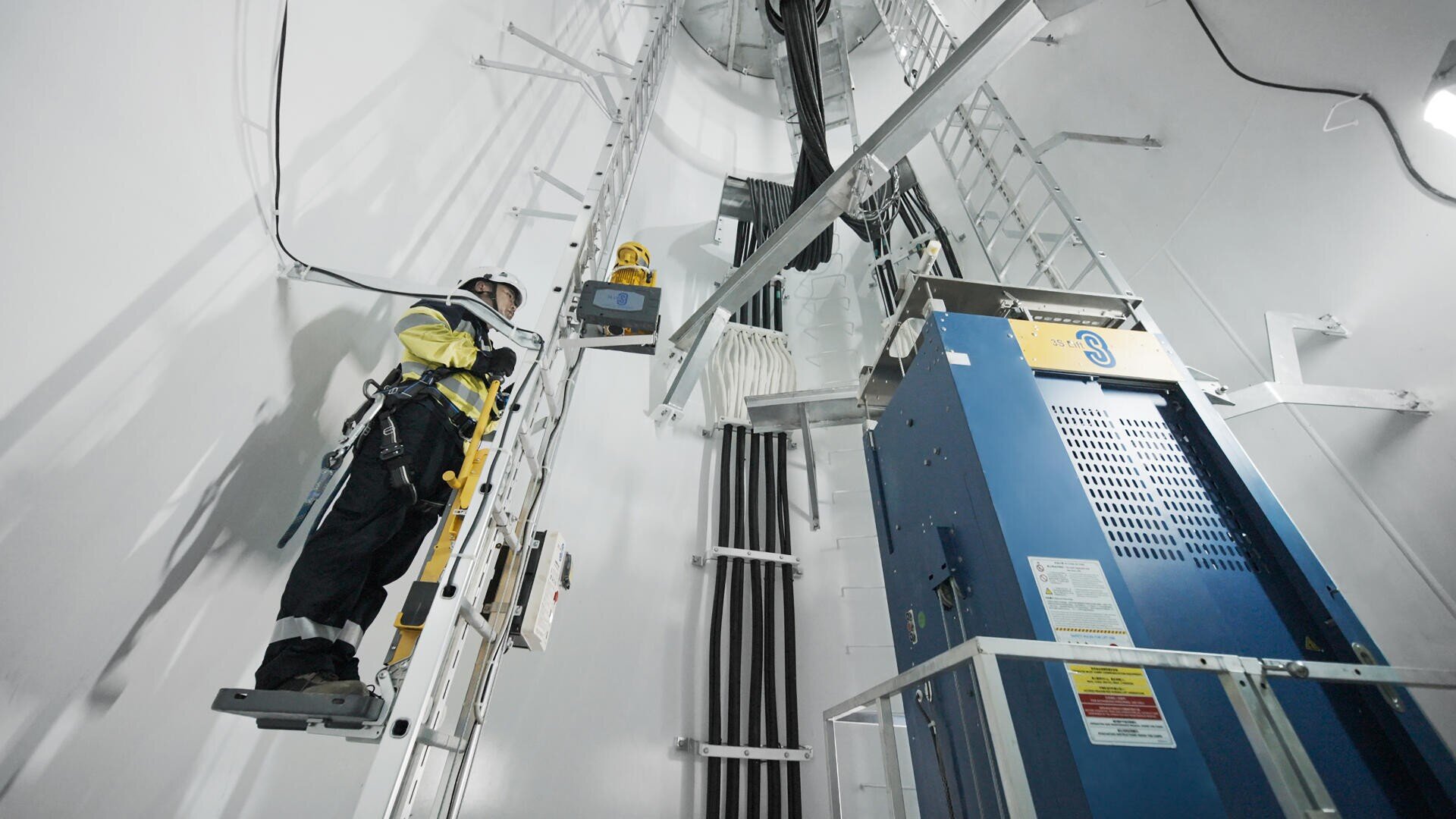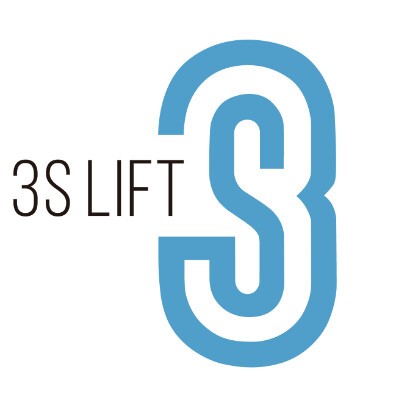How to Choose the Right Wind Turbine Tower Access Equipment
As wind turbines grow taller and more complex, the importance of safe, efficient and intelligent tower access equipment has never been greater. From retrofitting legacy systems to outfitting new high-capacity towers, wind farm developers and operators must make strategic choices that balance safety.
Wind energy has firmly established itself as a cornerstone of the global clean energy transition. With climate imperatives driving rapid deployment and innovation, the size and scope of wind turbine technology are evolving rapidly. According to the International Renewable Energy Agency (IRENA), global installed onshore wind capacity continues to expand year over year, setting new benchmarks for growth.
A defining trend in the industry is the rise of larger turbines with greater capacity and much taller towers. This evolution brings increased complexity, not only to the design and construction of wind turbines, but also to the systems that enable safe access for operations and maintenance teams. Tower access equipment, once viewed as a logistical detail, has become a key factor in both safety and performance.
The right access system does more than lift technicians; it impacts technician wellbeing, reduces turbine downtime, enhances maintenance efficiency and improves the overall economic viability of wind farms. As the industry races ahead, equipment choices must keep pace.
Essential functions and requirements of tower access equipment
Fundamentally, tower access equipment functions as a vertical transportation solution within the narrow, enclosed space of a wind turbine tower. These systems must be meticulously designed to meet stringent demands for safety, usability, and reliability.
Compliance with international safety standards is non-negotiable. Equipment must protect personnel during every phase of operation, whether ascending, descending or in the event of emergency stoppage. In addition to safety, simplicity is a key design goal. In emergencies, such as electrical failure, unexpected shutdowns, or sudden weather changes, equipment must remain easy to operate.
Maintenance is another critical factor. Downtime for servicing can be costly, and as turbines increase in size and number, scalable and low-maintenance solutions become increasingly valuable. Finally, the integration of smart technology, ranging from remote diagnostics to automated monitoring, is becoming the norm. As digital transformation sweeps across the wind industry, tower access systems are no exception.
Single- and multi-person equipment: understanding the options
Tower access systems fall broadly into two categories based on their capacity: single-person and multi-person solutions. Each offers specific advantages and technical characteristics suited to different types of towers and operational needs.
In the single-person category, the climb auto system (CAS) has emerged as a go-to choice for both retrofits and compact tower applications. Over the last 10 years, CAS has been widely adopted across global wind projects. One of its major advantages lies in its compact design, which allows installation without the need to alter or remove existing internal platforms. This makes it particularly well-suited for older or space-constrained towers.

The CAS features dual independent fall arrest systems, one for the operator and one for the lift car itself, along with a triple-redundant control system that minimizes the risk of malfunction. Smart monitoring capabilities enhance operational safety through features like overspeed lock-up, overload detection and proximity alerts for platform transitions. In addition, a manual emergency brake ensures that technicians have full control in unexpected scenarios.
One of the most significant benefits of the CAS is the way it reduces technician fatigue. By automating ascent and descent, it eliminates the need for strenuous manual climbing, which can lead to fatigue and increase the risk of accidents. The system also supports remote operation, further improving user safety and convenience. Accessories such as compatible toolboxes allow essential equipment to be transported along with the operator.
Multi-person tower access equipment, commonly referred to as service lifts, offers greater capacity and flexibility. These lifts come in several technical configurations, each tailored to specific tower environments. Wire rope-guided lifts use hoist-driven ropes on both sides to provide vertical transport in narrow, space-limited towers. Ladder-guided lifts connect directly to the tower’s internal ladder using support arms and offer enhanced stability and larger load capacities.
For demanding applications, especially in tall onshore or offshore towers, the rack and pinion service lift stands out. This high-performance system features robust lifting capacity and speed, along with an insulated conductor rail power supply, allowing it to operate even during tower erection.
Choosing the right system: scenarios and strategies
The decision to use a particular type of tower access equipment depends heavily on the scenario, whether dealing with existing turbines or installing new ones.
For existing wind turbines, many operators still rely on internal ladders or basic climbing aids. These systems, while once sufficient, now present serious challenges. Technicians face longer climbing times and greater fatigue, increasing the risk of accidents. As many workers age, the physical demands of climbing become more difficult to meet, while training new technicians is time-consuming and expensive.
Manual climbing also leads to longer rest periods and more frequent turbine downtime. In such situations, transporting tools becomes hazardous, with increased risk of items falling or being dropped.
Retrofitting these towers with a Climb Auto System provides a quick and effective solution. CAS installations can typically be completed without halting turbine operations, and the benefits are immediate: safer working conditions, improved technician morale, and reduced maintenance time. With more than 120,000 CAS units installed in over 4,000 wind farms worldwide, the system has become a proven industry standard.

When it comes to new turbine installations, the stakes and the challenges are higher. Modern turbines continue to grow in size and tower height, requiring access systems that can handle greater loads while maintaining operational efficiency. Conventional service lifts are often limited in reach, typically stopping at the cable transition platform roughly 20 meters below the yaw deck. Technicians are then required to complete the final ascent manually, an inefficient and often dangerous step.
On the other hand, while the CAS can reach the top, its payload capacity is limited. The solution increasingly adopted by developers is a dual-system approach that combines the strengths of both systems. The service lift carries personnel and tools to the cable transition platform, after which the CAS takes over and transports technicians to the top platform.
This combined strategy delivers full-tower access and resolves the limitations of each system. As wind farm projects grow in scale and complexity, this integrated model is becoming the standard for next-generation installations.
The role of digitalization and smart access
As the global wind power sector accelerates, digitalization is reshaping nearly every facet of turbine design and maintenance, including tower access. Forward-thinking manufacturers are now embedding intelligent control systems, data analytics, and predictive diagnostics into their access equipment. These digital capabilities enable remote monitoring, real-time performance tracking, and proactive maintenance, all of which contribute to reduced downtime and extended equipment lifespan.
3S, a leading player in the field, is actively advancing this trend by integrating smart technologies into its tower access solutions. The company’s systems are designed not only to meet safety and usability standards but also to support the digital transformation of wind operations. Through innovation, 3S aims to provide highly specialized, data-enhanced access equipment that aligns with the evolving needs of wind energy developers and operators.
By helping customers achieve the right balance between safety, efficiency, and cost, companies like 3S are playing a crucial role in the sustainable development of global wind power.
Elevating safety and performance with the right equipment
Tower access is no longer an afterthought; it is a critical element in the safe and effective operation of wind turbines. As turbine towers climb ever higher and as industry standards evolve, choosing the right access solution is essential. Whether upgrading existing infrastructure or equipping the next generation of turbines, the goal remains the same: to protect workers, reduce downtime and maximize the economic potential of wind power assets.
With a wide range of advanced equipment now available and with smart technologies leading the way, operators have more options than ever. The key lies in making informed decisions, tailored to the technical and operational demands of each unique project.

